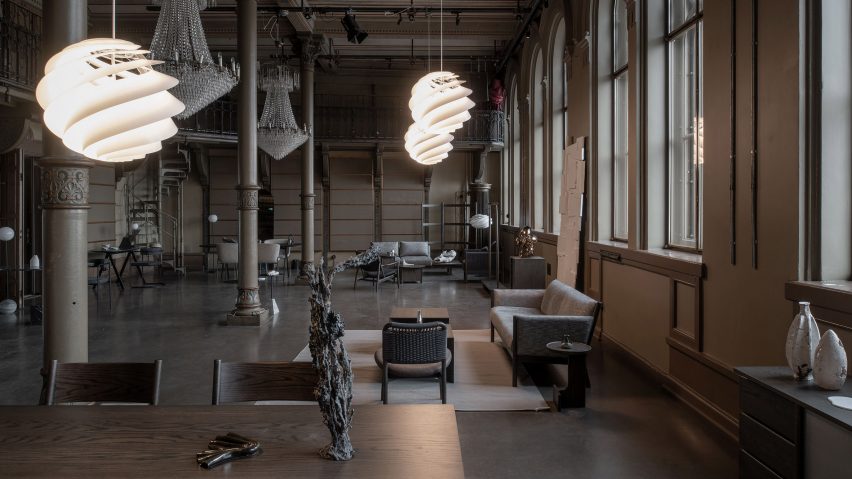
Stockholm's historic national archive hosts first ever design exhibition
To coincide with Stockholm Design Week, the city's 19th century Gamla Riksarkivet played host to The Archive exhibition exploring the "shared aesthetics and values" of Japanese and Scandinavian design.
It marks one of the few times that the listed building, which was erected in 1890, has been open to the public and the first time that it has served as the backdrop to a design-focused installation.
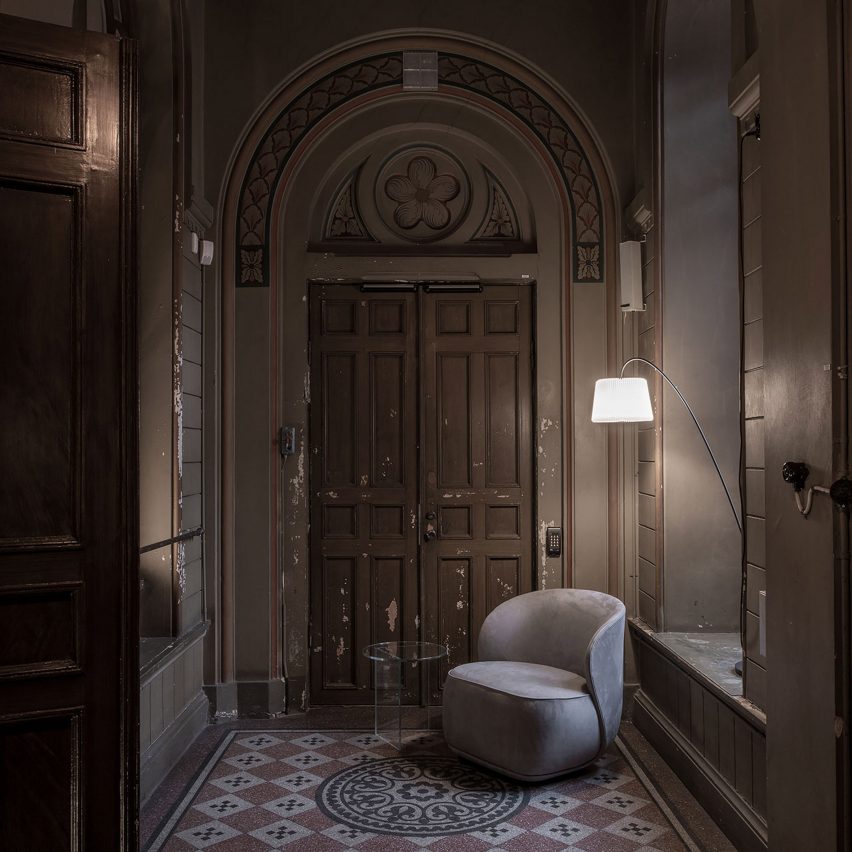
"The space has historical significance and a story to tell on its own," explained exhibition's curator Hanna Nova Beatrice.
"We believe that in order for an exhibition to have a soul, the venue contributes a significant part and the Gamla Riksarkivet was perfect in many ways."
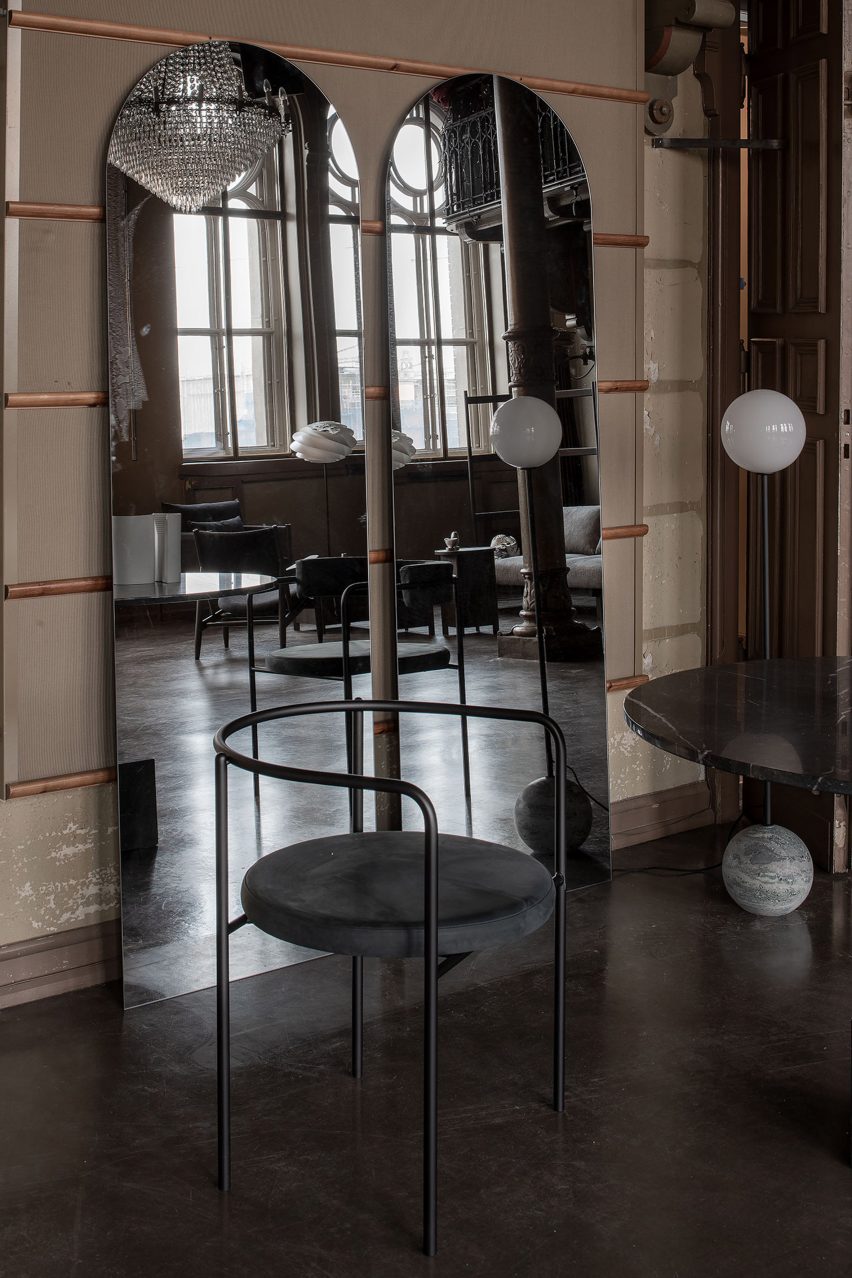
The Archive exhibition, which was styled by Annaleena Leino, sees the building's high, stucco ceilings, grand chandeliers and pillars contrasted with a menagerie of modernist designs.
These were designed by Japanese furniture company Ariake and ceramics studio 2016/Arita, as well as the Danish furniture makers Friends and Founders and lighting brand Le Klint.
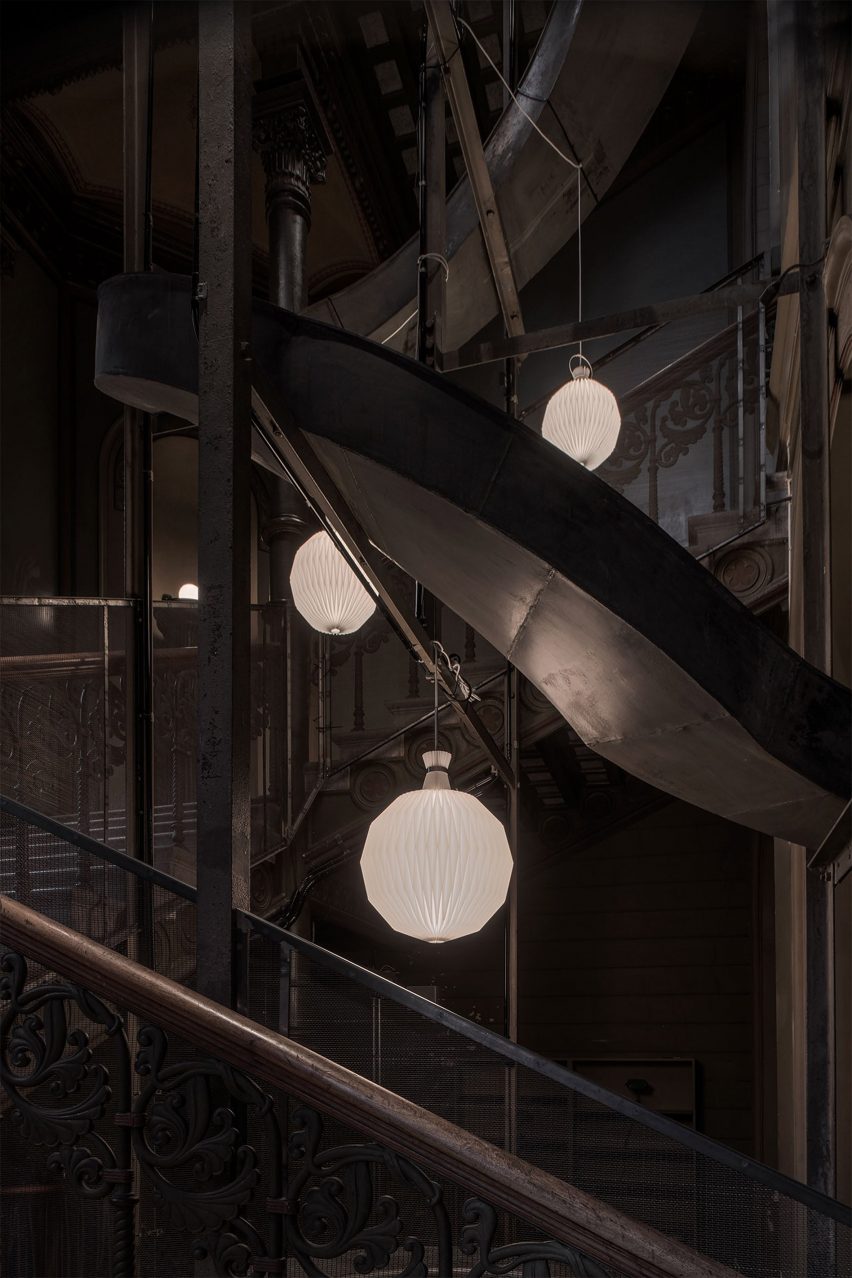
"The two regions are both exotic and familiar to each other. They share a love of nature, seasonal changes, materials and crafts," said Beatrice.
"Scandinavians have a democratic non-hierarchical perspective, while Japan has respect for the masters. But both are deeply rooted in handcraft and share the values of simplicity and dedication to their craft.
"Many workers for the brands we've featured spend a lifetime perfecting their skills and practice at the same company for their whole career."
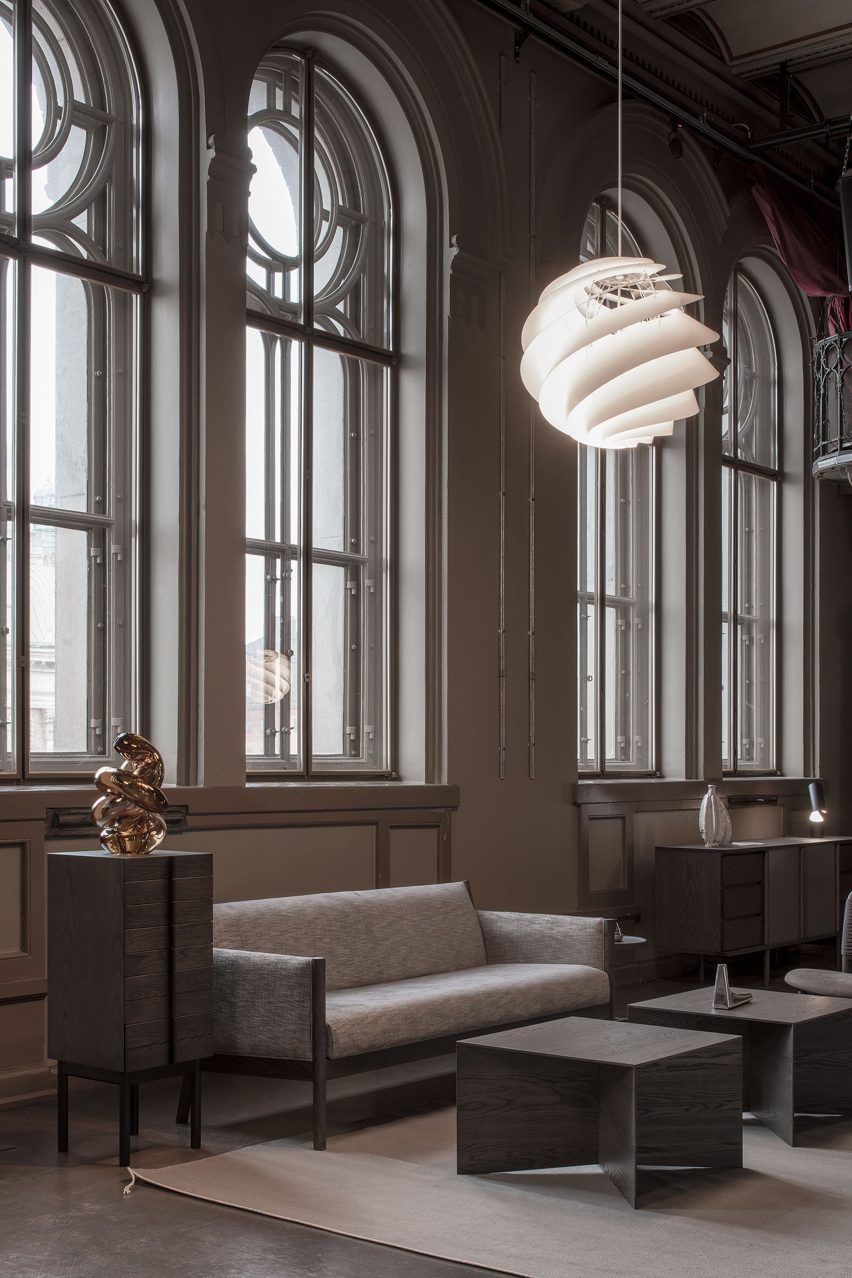
To showcase this convergence of approaches, each room features a mix of products from the different companies, spanning furniture, lighting and ceramics.
Beyond a light-strung, spiral staircase, the first and largest room of the exhibition is held in muted shades of slate grey and black.
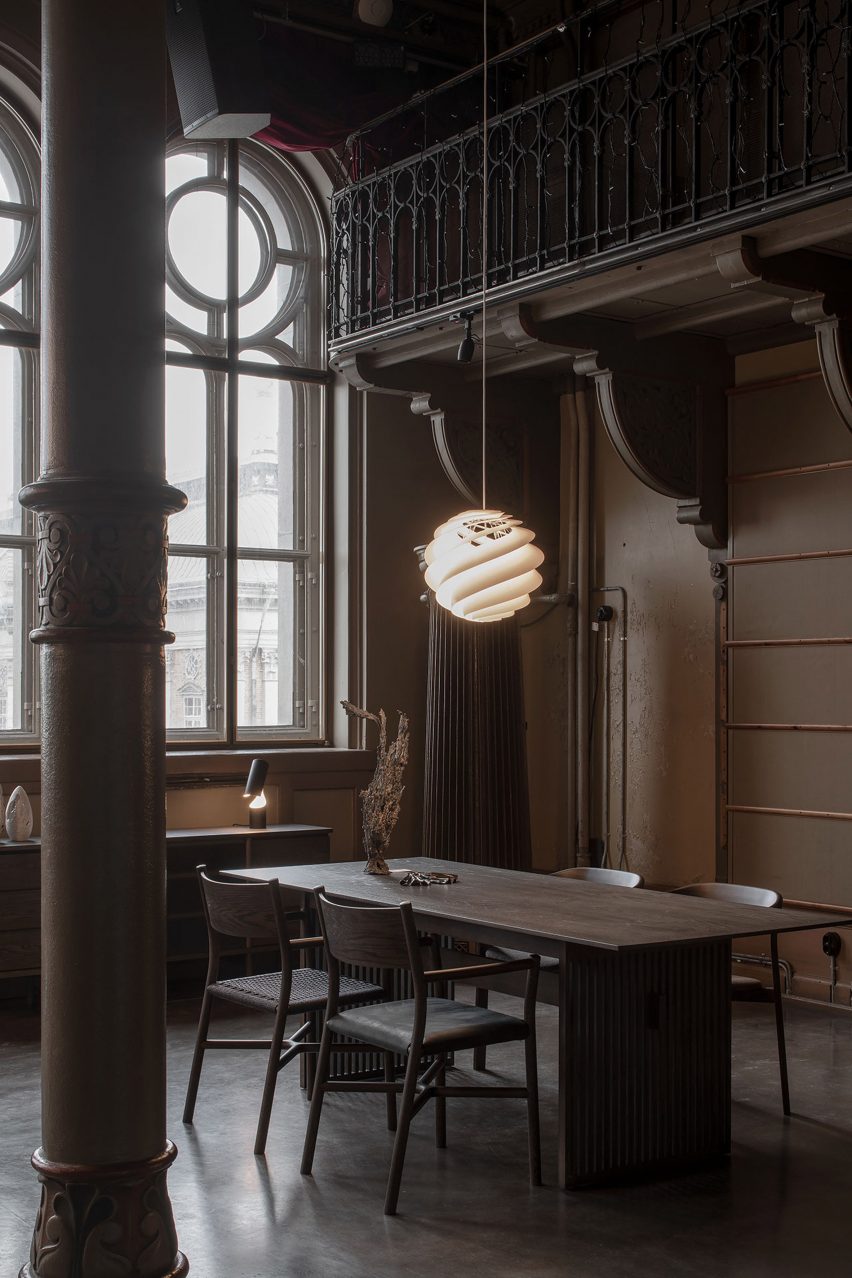
A chocolate brown table with wooden lattice legs, designed for Ariake by Norm Architects, is complemented by the brand's self-titled armchairs with alternating leather and fabric seats.
On the opposite side of the room, these same lattices are found in wooden screens and the armrests of the Braid sofa, also designed for the brand by its creative director Gabriel Tan.
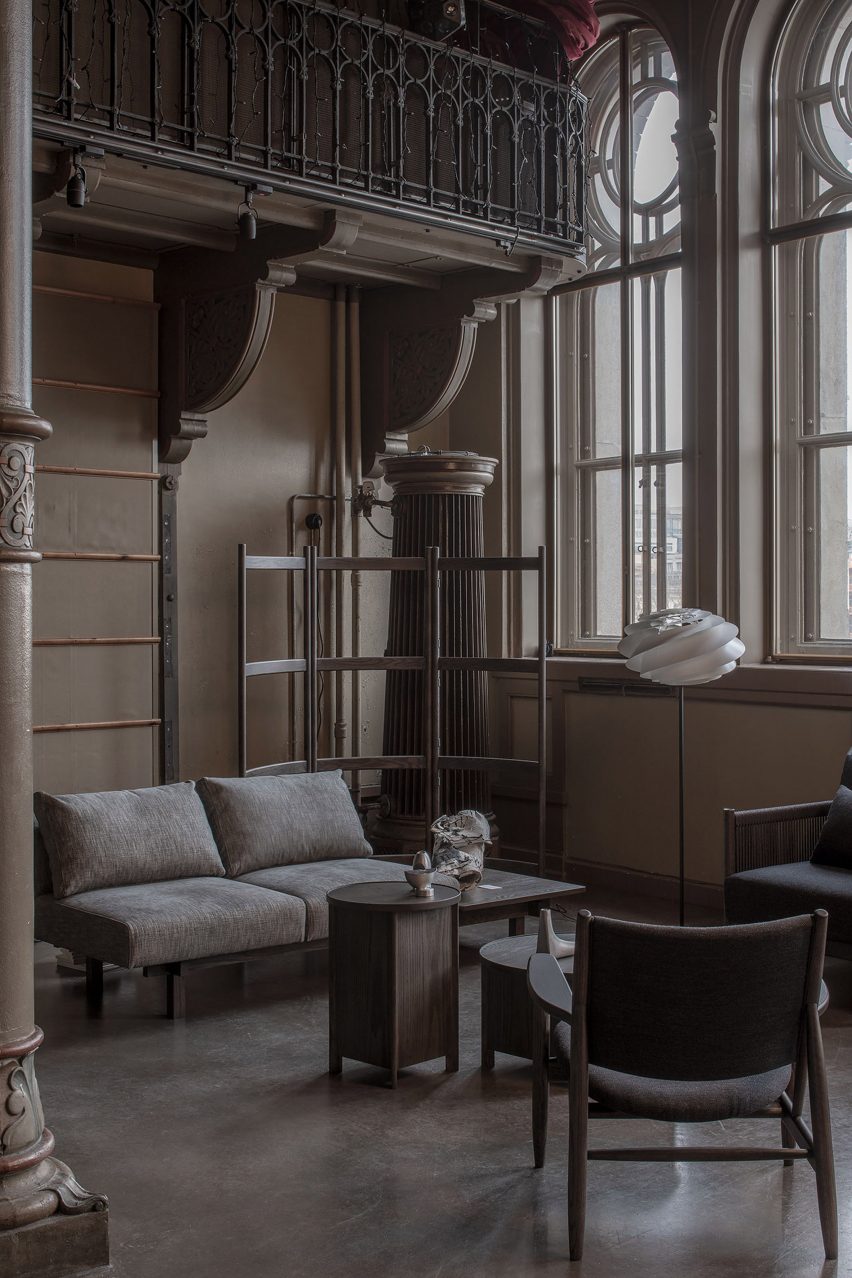
This is paired with an Ariake side and coffee table duo created in collaboration with Stockholm's Note Design Studio, which consist of a rectangular box base and a rounded top.
To the left, another dining table set-up features a rounded, black table by Friends and Founders, offset against seats with golden metal legs and tactile, fleecy upholstery.
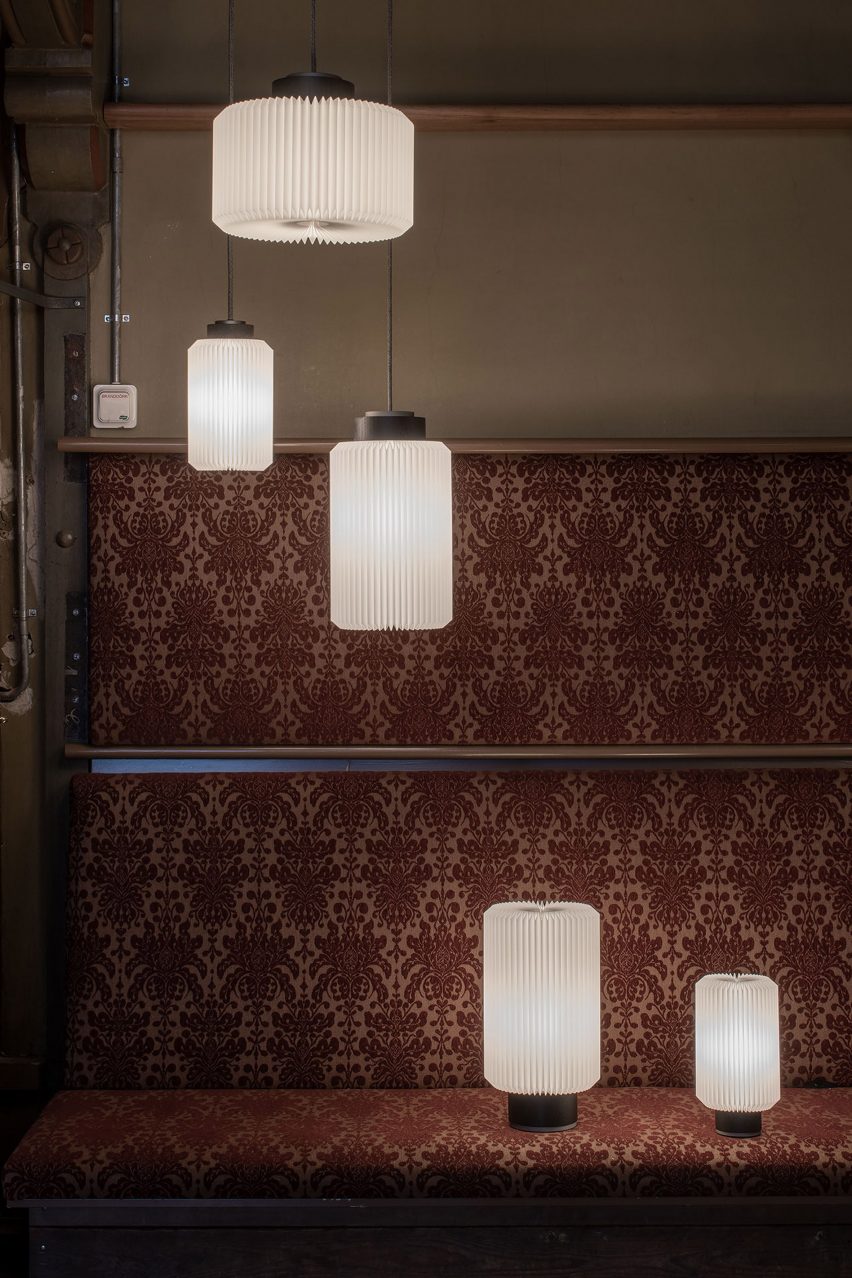
The only room to be dedicated to a single brand is flanked by high-backed benches, upholstered in red baroque fabric, to allow Le Klint's hand-pleated lights to shine.
Each is fashioned in the brand's studio in Odense, Denmark, where apprentices train for three years in order to qualify as pleating technicians.
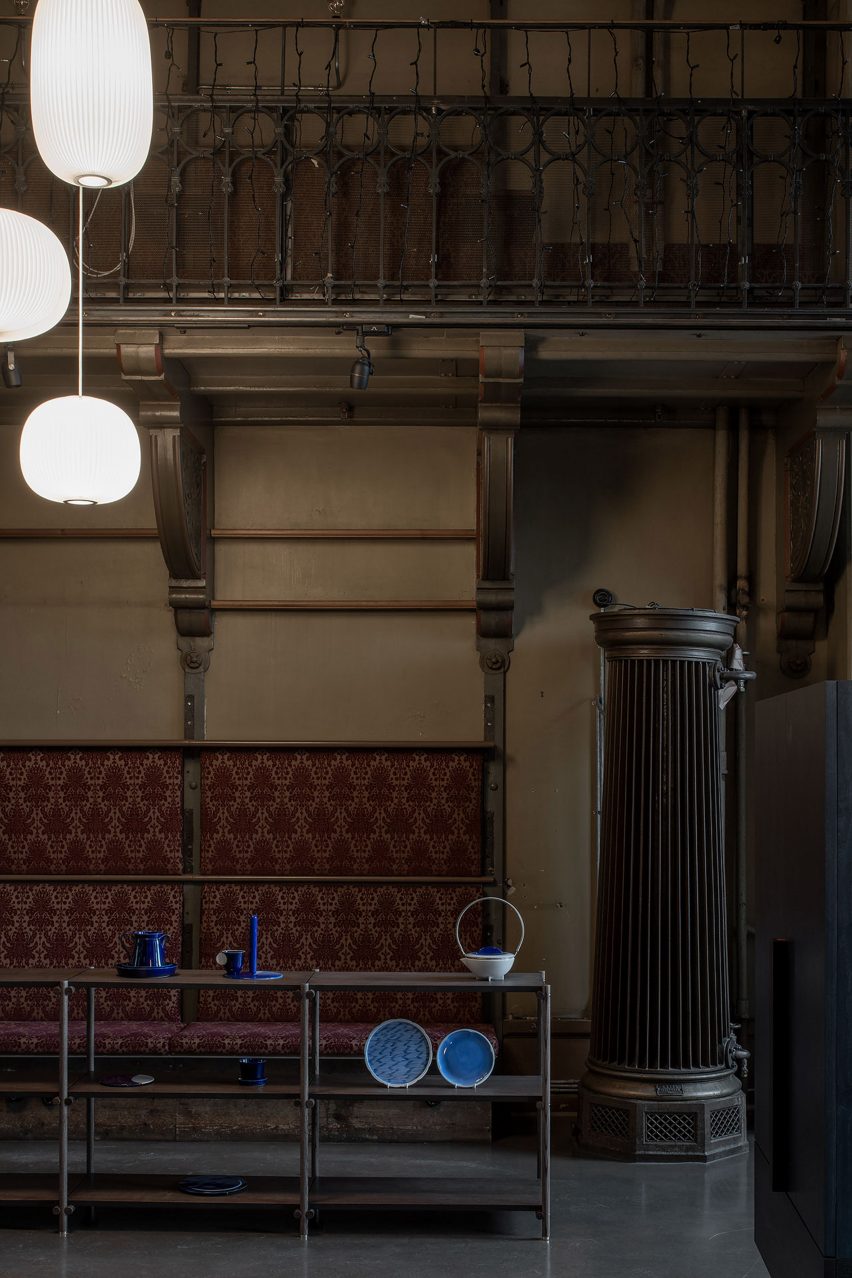
The next room along is anchored by two collections of coloured porcelain, created by 2016/Arita with a series of international designers.
Here, a dark wooden Friends & Founders shelf displays the collaboration with Studio Wieki Somers, in which a series of plates, pots and cups are tinted in white and cobalt blue ombré.
Across from this, a sleek Arita cabinet stands open to reveal an all-red collection of tableware created by Japanese designer Shigeki Fujishiro in homage to his culture's preoccupation with the colour.
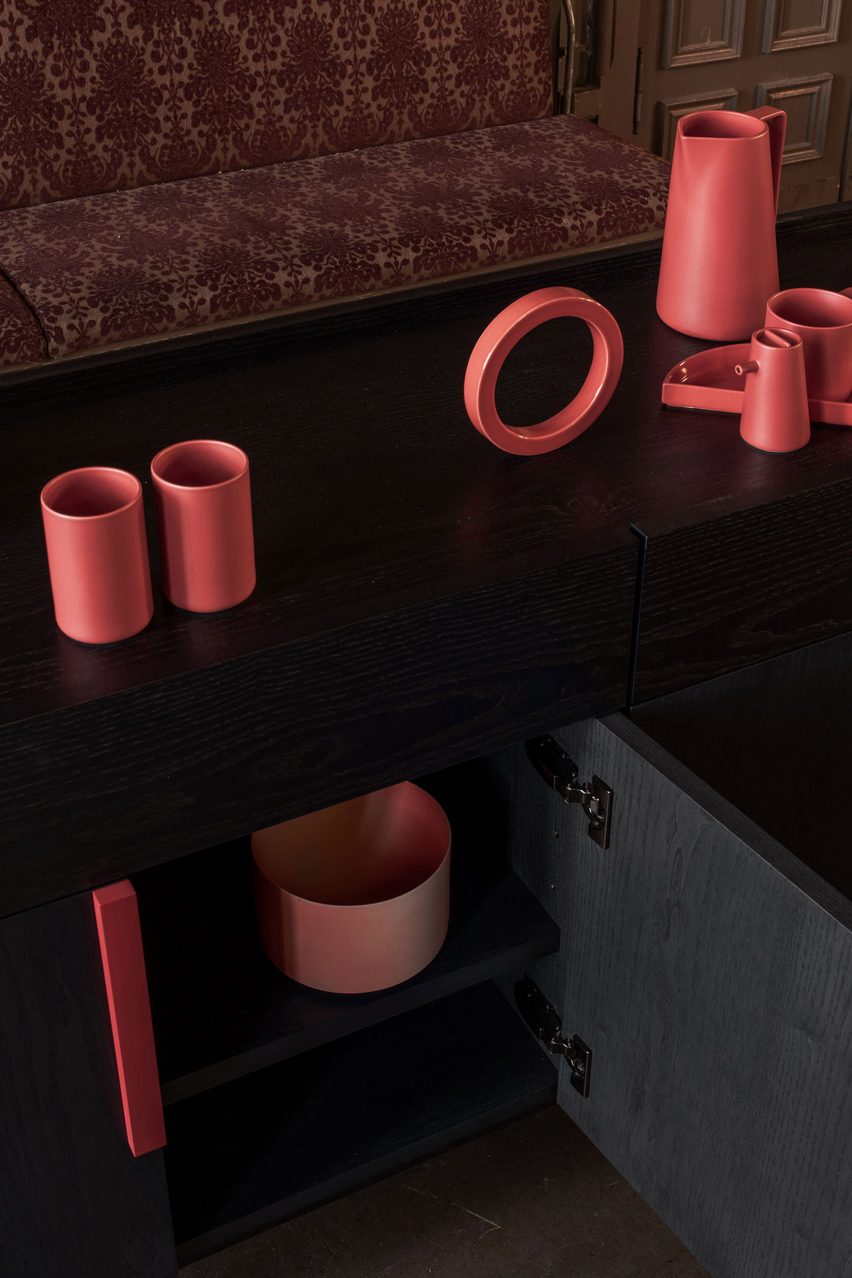
A second room dedicated to ceramics plays with contrasts instead of colours, displaying black and white pieces on opposite sides of the space, carefully arranged atop the Old National Archive's own olive green shelves.
This same monochromatic look is picked up again in a pair of Friends & Founders chairs with a geometric, H-shaped frame and inverted colour palette.
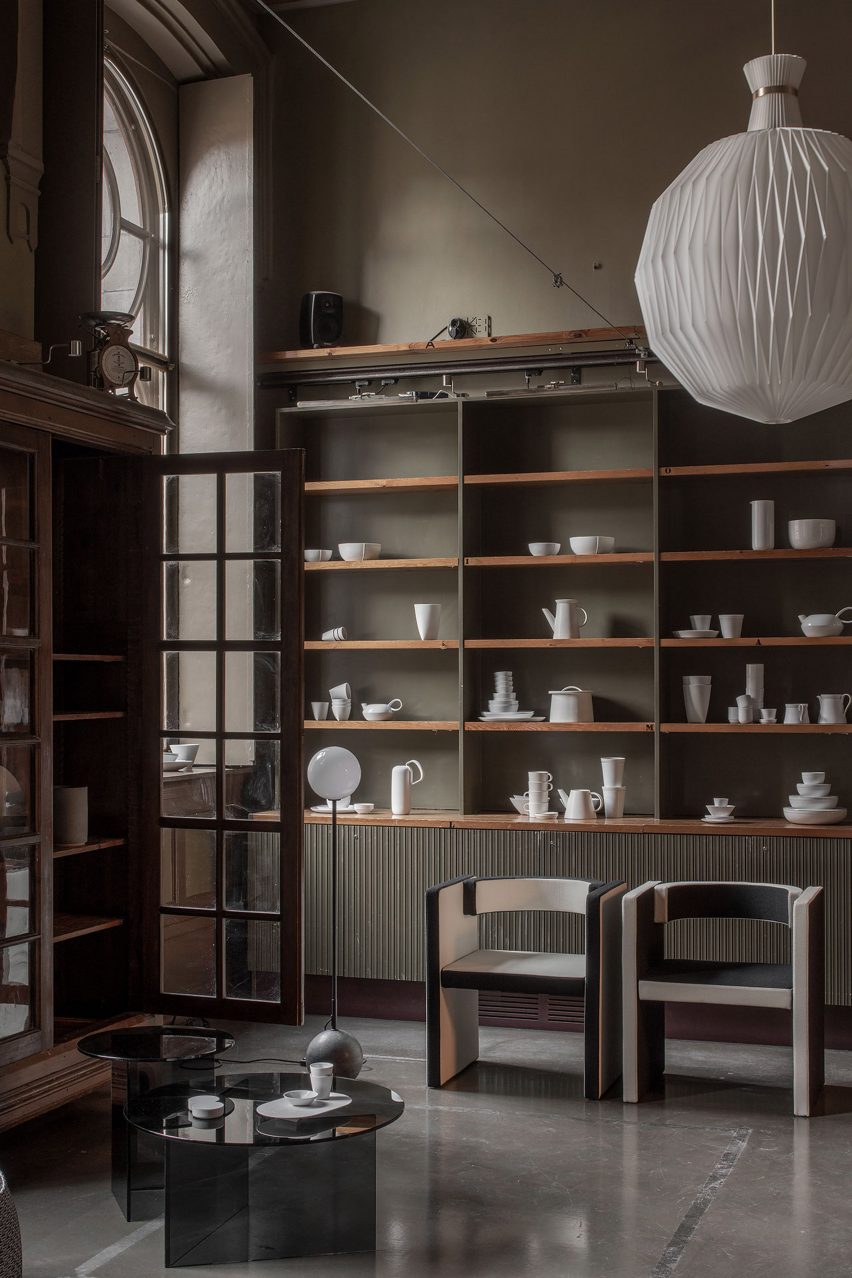
A duo of the brand's overlapping glass tables finish the set-up, and are also repeated in the final room, alongside a sloping white lounge chair.
Where the first room is all dark, this one is all light, with the same latticed sofa Gabriel Tan and a long dining table finished in light ash and beech shades.
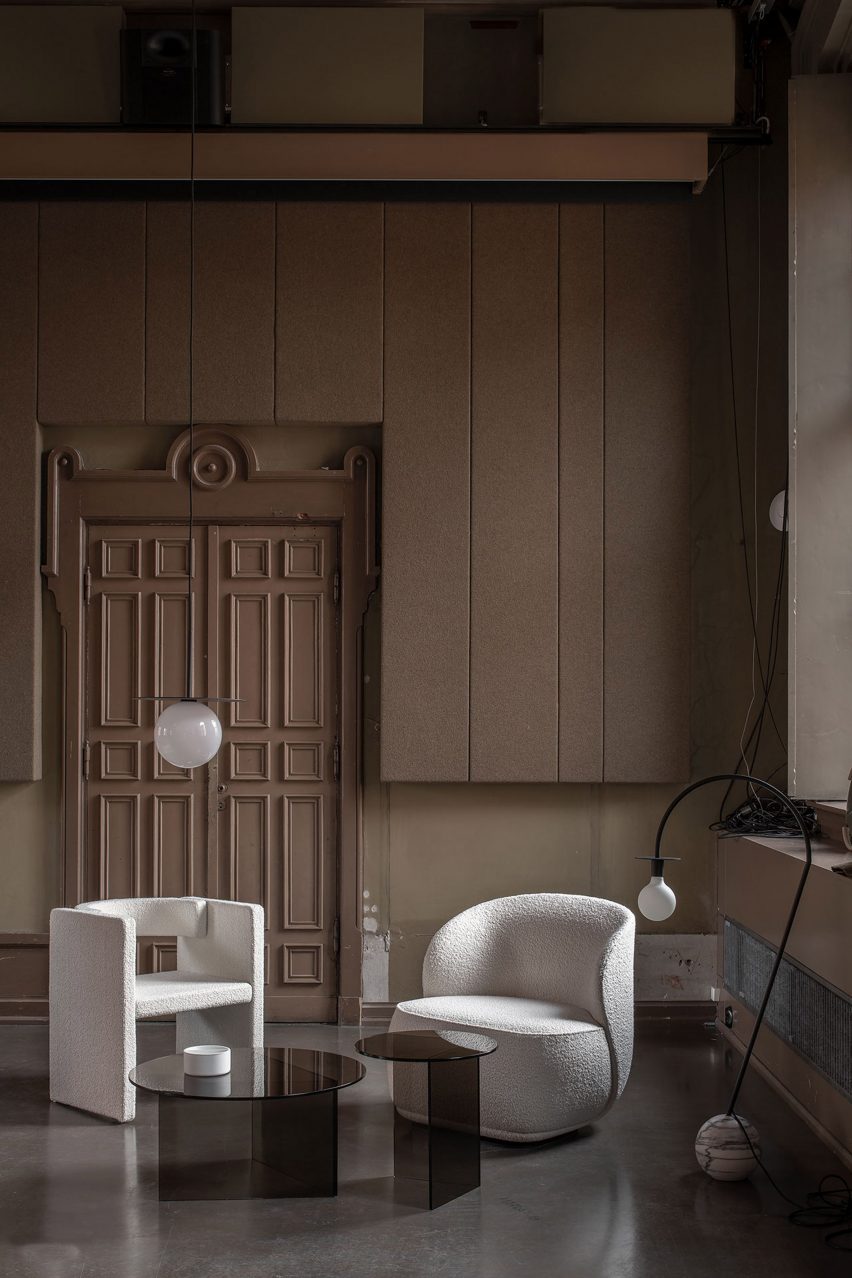
To add depth and detail to the exhibition, each room is dotted with a variety of sculptures by Swedish artists – variously rendered in industrial concrete by Simon Anund, swirled blown glass by Markus Emilsson, or arched ceramic by Sofia Tufvasson.
Also featured are a number of pieces from the Southern Lights collection by Portuguese craft company Origin, including an architectural vase created in collaboration with Norm Architects as well as sandcast aluminium candleholders from German industrial designer Christian Haas.
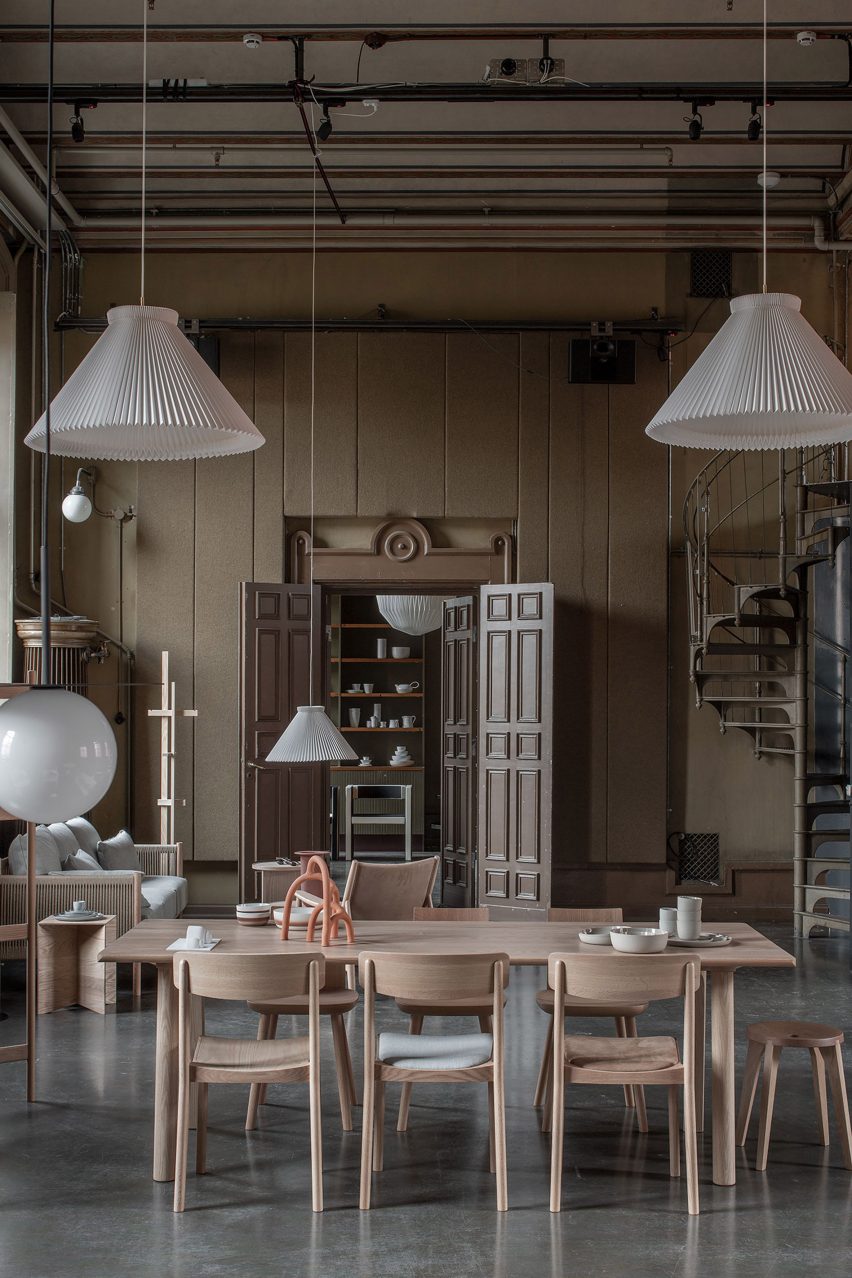
The collection was presented elsewhere at Stockholm Design Week as part of a standalone exhibition at design shop Asplund.
Among the other more than 2oo events taking place across the city that week was an exhibition of flamboyant lights by artist Aia Jüdes and an installation resembling the eclectic living quarters of a sculptor, created by Norm Architects in collaboration with furniture brands Menu and Dux.
Photography is by Andy Liffner.